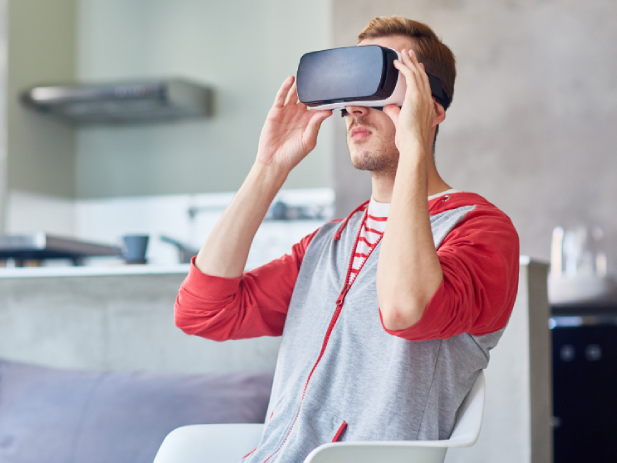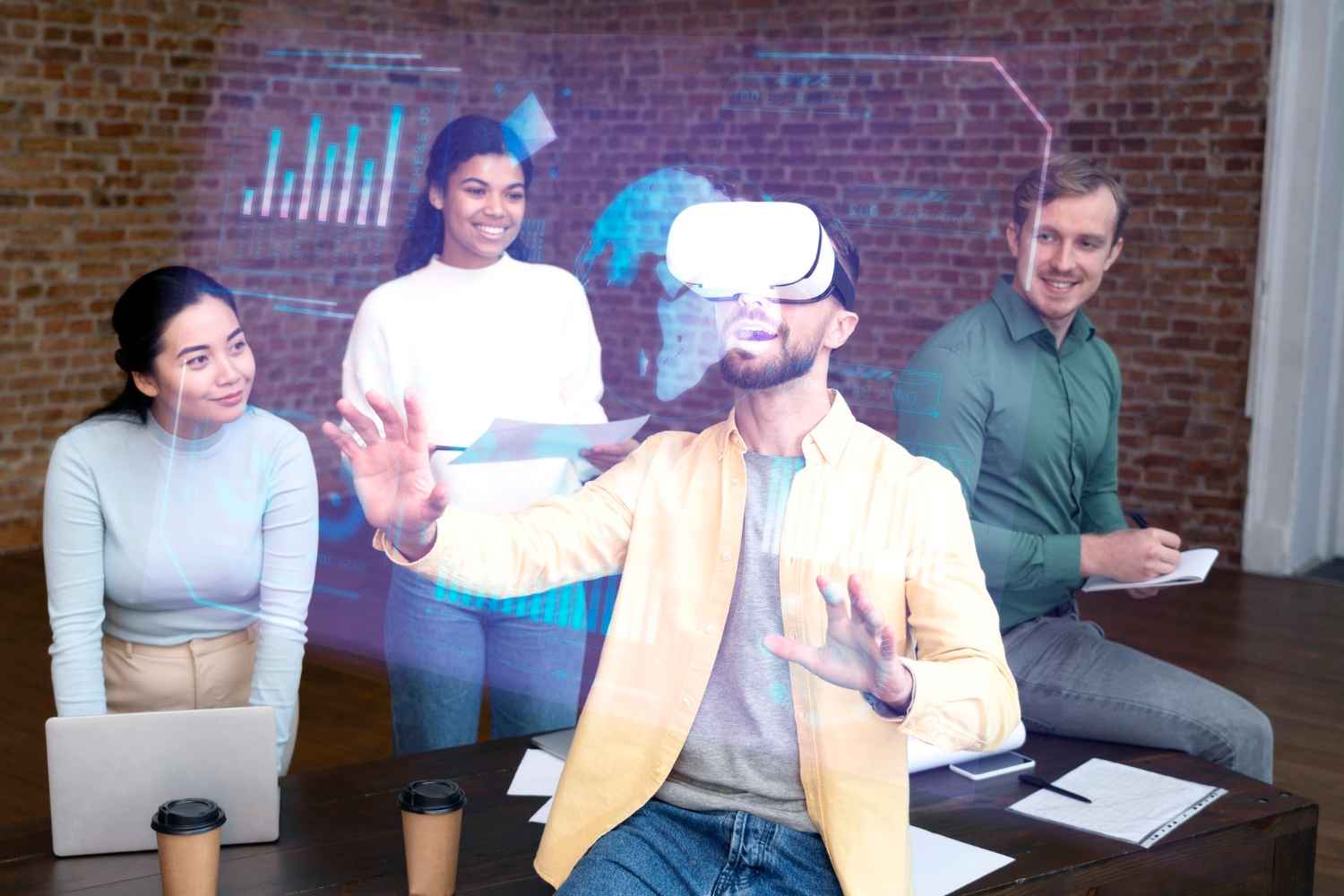In the ever-evolving realm of mobile app development, two groundbreaking technologies have stepped into the spotlight: Augmented Reality (AR) and Virtual Reality (VR). These immersive technologies are being harnessed by Mobile App Development Companies, which include Android app development companies and iOS app development companies, to redefine the way we interact with our mobile devices. In this blog, well take you on an exciting journey into the realm of AR and VR in mobile apps, exploring their profound impact, potential applications, and what the future holds for these transformative technologies.
AR: Enhancing Reality with a Digital Layer
Augmented Reality (AR) is a technology that enhances the way we perceive the world around us by overlaying digital data, images, and objects onto the physical world. Mobile applications utilizing AR have become increasingly popular due to their ability to seamlessly blend the real and digital realms. A prime example of this is the game-breaking "Pokémon GO", which has captivated the world and encourages players to explore their environment in search of virtual creatures. AR has also found applications in a variety of other areas, such as retail. For example, apps such as IKEA Place enable shoppers to preview their homes furniture and decor before making a purchase, allowing them to make more informed purchasing decisions and reduce the risk of returns, thus contributing to sustainability. Additionally, cosmetics brands such as Sephora allow customers to try on their makeup without the need for a physical sample, thus improving the online shopping experience.
Navigation applications have also taken advantage of augmented reality to provide users with up-to-date information in a highly user-friendly way. For example, Google Maps uses AR to add directional arrows and street signs to the live camera view to make navigation in unfamiliar environments more convenient. This technology is especially useful for pedestrians as it provides sequential instructions without requiring the user to take their attention away from the environment.
AR has also revolutionized education and learning. Apps such as “AR Flashcards†have enabled educational content to be overlaid on physical flashcards, creating a dynamic and interactive environment for young learners to interact with. Medical students can also explore human anatomy in an unprecedented way by using AR applications that project virtual bodies and structures onto textbooks and anatomical models.
The application of augmented reality can also be applied to the workplace. For example, in the maintenance and repair sectors, AR applications can provide digital guidance to technicians by affixing digital instructions to physical equipment, thereby minimizing mistakes and increasing productivity. This is especially advantageous in industries such as aviation, where intricate machinery necessitates precise procedures.
VR: Immersion in a Virtual World
Virtual Reality (VR) is an increasingly popular form of augmented reality (AR) that transports users to completely virtual environments, allowing them to immerse themselves in computer-generated reality (CGI). VR mobile applications offer not only interactive but also deeply immersive experiences, allowing users to feel as if they are already present in digital worlds. While VR has traditionally been associated with higher-end headsets, the emergence of mobile VR has made the technology more accessible. Gaming has been a major driver for VR adoption, with affordable mobile VR platforms such as Google Cardboard or Samsung Gear VR providing players with immersive gaming experiences. Popular titles such as "Minecraft VR", "Beat Saber", and "Jedi Strike Force" have enabled users to transport themselves to fantastical realms, or to put themselves in the role of a Jedi, swinging a lightsaber to the rhythm of the music. With the ever-evolving VR hardware, the gaming industry stands poised to revolutionize the way players interact with digital worlds.
In addition to gaming, virtual reality has had a significant impact on the training and simulation industries. Airline, medical, and military personnel have adopted VR to provide training in realistic and non-invasive environments. Airline pilots can practice life-saving techniques, surgeons can practice surgical techniques, and military personnel can receive combat training in virtual environments that replicate real-world conditions.
In addition to training, VR has also revolutionized the way we access media and entertainment. Apps such as "Netflix VR," for example, allow users to stream movies and television shows from a virtual cinema with a large screen and immersive sound. Similarly, VR streaming allows users to experience concerts and live events from any location, regardless of where they are located.
Another area where VR has had a positive impact is virtual tourism. Apps such as “Wander†allow users to explore iconic destinations, such as the Grand Canyon, the Statue of Liberty, and other iconic landmarks, as though they were there. Not only does this satisfy wanderlust, but it can also be used as a tool to aid in travel planning and educational purposes.
Virtual Reality (VR) has a positive impact on both education and collaboration. Education institutions are taking advantage of VR to develop immersive learning experiences that enable students to immerse themselves in past events, travel to remote locations, or delve into complex scientific topics. Businesses are also taking advantage of VR meeting platforms such as AltspaceVR and VRChat to bring remote teams together in virtual environments, encouraging collaboration and creativity.
Challenges and Consideration
The potential of Augmented Reality (AR) and Virtual Reality (VR) is immense, however, there are a number of challenges and considerations that must be taken into account. The hardware necessary for a high-end VR experience can be costly, thus restricting access for certain users. Additionally, there are issues associated with motion sickness or disorientation, which must be addressed in order to provide a comfortable experience. Furthermore, data privacy and security must be taken into consideration, as immersive technologies may collect confidential user information.
Developers must possess specialized skills and resources in order to create AR and VR applications. Developing immersive 3D environments and optimizing performance, as well as ensuring compatibility across multiple devices, can be laborious and time-consuming tasks. As these technologies become more popular, additional resources and tools are being made available to developers.
The Future of AR and VR in Mobile Apps
The future of Augmented Reality (AR) and Virtual Reality (VR) in mobile applications is highly promising. As hardware becomes increasingly powerful and cost-effective, AR and VR applications will become more accessible to a wider range of users. This accessibility will stimulate innovation in a variety of sectors, including healthcare, education, entertainment, and beyond. Imagine a world where medical students can conduct surgical simulations in virtual reality, architects can explore virtual buildings before their construction begins, and travellers can travel to far-off planets from the comforts of their own homes. The possibilities are truly mind-boggling, and only our imagination and technological progress can unlock them.
As augmented reality and virtual reality continue to develop, they are likely to converge, leading to the development of Mixed Reality experiences that seamlessly merge the real and virtual realms. This convergence will broaden the scope of mobile app development and provide users with a new level of immersive and interactive experience.
Conclusion
Augmented Reality (AR) and Virtual Reality (VR) have advanced beyond the realm of speculative fiction to become game-changing technologies in the realm of mobile applications. Not only are these immersive technologies revolutionizing industries, but they are also revolutionizing entertainment, education and daily life. As the availability of hardware and development tools increases, the future holds limitless possibilities for AR and VR technologies to transform the way we interact with digital devices and the environment around us, unlocking experiences that we have yet to comprehend.











.jpg)
